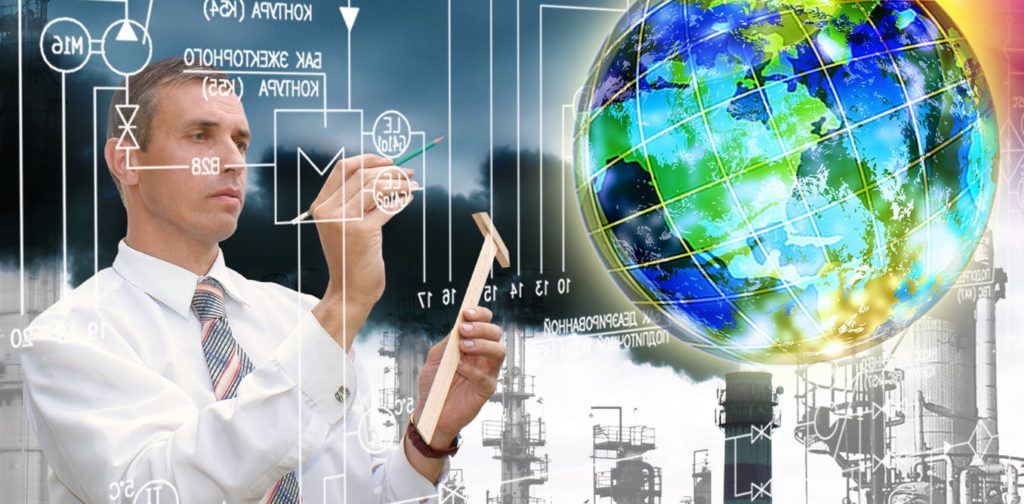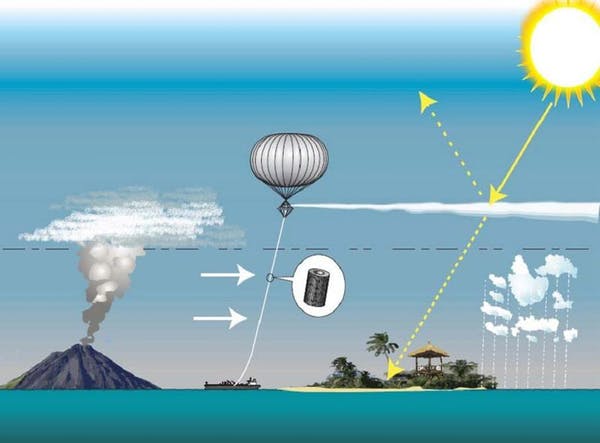Time Is Running Out on Climate Change, but Geoengineering Has Dangers of Its Own
ENVIRONMENT, 10 Dec 2018
Catriona McKinnon – The Conversation
3 Dec 2018 – We have just 12 years left to reduce emissions and achieve the Paris Agreement’s highest ambition of limiting warming to 1.5°C. We have been warned, repeatedly, of the high stakes of our present climate gamble. If we continue on our current course, radical solutions are going to be needed sooner rather than later.
Champions of solar radiation management (SRM) say this is the answer we’ve been looking for. SRM techniques cool the planet by reflecting sunlight away from it. The most discussed SRM technique involves continuously injecting tiny reflective particles – most often, sulphur – into the stratosphere to evenly cover the planet and shield us from the sun’s rays. Fleets of drones, or sprayers attached to enormous tethered balloons, could deliver these particles. Spray a little more, and the temperature drops; spray a little less, and the temperature rises.
Unlike the other dominant form of climate engineering, carbon dioxide removal, SRM does not extract greenhouse gases from the atmosphere. Rather, it masks the warming caused by those gases. Advocates say that SRM could give humanity a decent shot at getting its act together on mitigation. They also say the costs of SRM would be a fraction of the costs of the climate impacts we are facing without this technology.
Poor regulation
However, there are reasons for caution, if not outright scepticism, about the wisdom of this techno-fix for climate change. One important worry relates to who governs research into SRM, given the risks it presents and its seductiveness as a “solution” to the climate crisis. There are some proposed self-regulations by SRM researchers, and more attention is being paid to international governance of SRM research, but a vacuum of governance remains.
To fill this vacuum in morally acceptable ways requires establishing governance to address the danger of sleepwalking into SRM “lock-in”, where a society becomes locked-in to a technology that has become too costly to abandon, even though alternative technologies may be better.
Once SRM deployment has begun, a status quo bias could quickly establish the new normal of a geoengineered world. It could combine with environmental generational amnesia, a phenomenon where generations of people forget previous environmental states and so don’t notice their deterioration. Those with their hands on the global thermostat – political leaders focused on short electoral cycles, and corporate leaders feeding the bottom line – would be tempted to continuously extend deployment to enable more and more business as usual.
A climate catastrophe
Imagine we become locked-in to a permanent geoengineered world in which SRM is being widely used but catastrophic climate change has been avoided. What’s the problem?
One potential big risk of widespread deployment of SRM is something called termination shock, where the technology is abruptly stopped, for example, by war, natural disaster, or sabotage. This would cause temperatures to rise very quickly to reflect the atmospheric concentration of greenhouse gases. If societies are locked into the technology, these speedy rises could be truly catastrophic. Even if SRM were to be used only temporarily, the long atmospheric life of C0₂ means that abrupt termination would still lead to a massive, swift warming effect.
SRM deployment is not an insurance policy against climate catastrophe. It creates new and terrible dangers of its own. We must not have a Panglossian view of the protection offered to us by existing institutions and the current global order. There needs to be governance of SRM research now that guards against lock in.
_________________________________________
Catriona McKinnon – Professor of Political Theory, University of Reading
Republish our articles for free, online or in print, under Creative Commons license.
Go to Original – theconversation.com
DISCLAIMER: The statements, views and opinions expressed in pieces republished here are solely those of the authors and do not necessarily represent those of TMS. In accordance with title 17 U.S.C. section 107, this material is distributed without profit to those who have expressed a prior interest in receiving the included information for research and educational purposes. TMS has no affiliation whatsoever with the originator of this article nor is TMS endorsed or sponsored by the originator. “GO TO ORIGINAL” links are provided as a convenience to our readers and allow for verification of authenticity. However, as originating pages are often updated by their originating host sites, the versions posted may not match the versions our readers view when clicking the “GO TO ORIGINAL” links. This site contains copyrighted material the use of which has not always been specifically authorized by the copyright owner. We are making such material available in our efforts to advance understanding of environmental, political, human rights, economic, democracy, scientific, and social justice issues, etc. We believe this constitutes a ‘fair use’ of any such copyrighted material as provided for in section 107 of the US Copyright Law. In accordance with Title 17 U.S.C. Section 107, the material on this site is distributed without profit to those who have expressed a prior interest in receiving the included information for research and educational purposes. For more information go to: http://www.law.cornell.edu/uscode/17/107.shtml. If you wish to use copyrighted material from this site for purposes of your own that go beyond ‘fair use’, you must obtain permission from the copyright owner.



